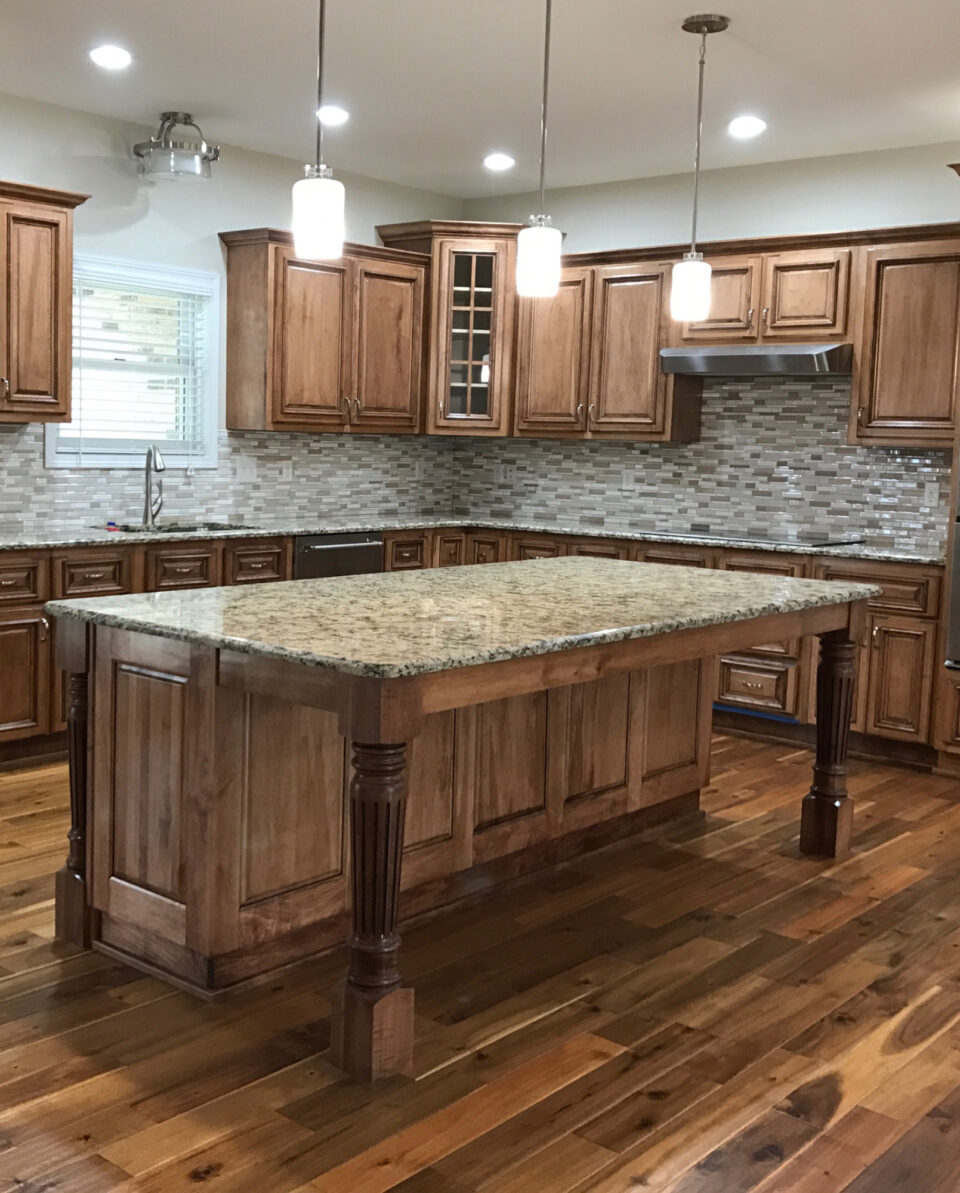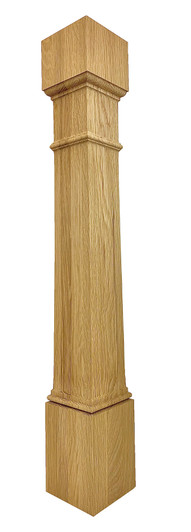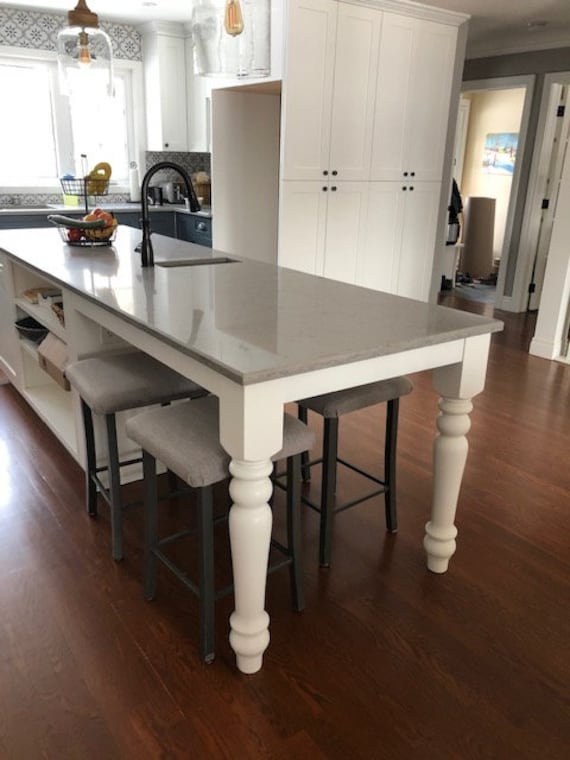Top Factors To Consider When Picking a Kitchen Island Leg for Modern Kitchen Area Interiors
In the world of contemporary kitchen interiors, the choice of a cooking area island leg is critical, affecting both appearances and functionality. As these elements intertwine, they increase even more concerns concerning how to achieve the ideal equilibrium between style and practicality, leaving one to ponder the ramifications of each decision on the general kitchen area experience.
Material Choices
When it concerns choosing a cooking area island leg, product choices play an important duty in both visual appeals and functionality. kitchen island leg. The most common materials include wood, metal, and composite options, each offering distinctive advantages and possible downsides
Wood is favored for its warmth and timeless allure, supplying an ageless look that matches numerous kitchen area styles. It is highly versatile, enabling for personalization in terms of finishes and shades. Timber might need more upkeep to stop bending or damages from moisture.
Metal, on the other hand, brings a industrial and modern-day style to kitchen islands. Stainless-steel and wrought iron are popular options, understood for their sturdiness and resistance to put on. They can stand up to the rigors of everyday usage however may do not have the warmth linked with timber.
Composite materials, such as crafted timber or synthetic blends, supply an equilibrium in between cost, sturdiness, and aesthetic appeals. These options are usually created to resemble the appearance of natural materials while providing resistance to spills and scratches.
Eventually, the option of material must align with the general cooking area style and planned use, ensuring that the kitchen area island leg is both useful and visually enticing.
Design And Style
The design and style of a kitchen island leg considerably add to the overall visual of the space, complementing the chosen material. When picking the leg design, think about the building design of the cooking area. For instance, sleek, minimalist legs made from stainless-steel or acrylic harmonize with contemporary styles, while ornate, turned timber legs improve typical or farmhouse aesthetics.
Additionally, the finish of the leg can affect the visual effect; a polished chrome or matte black finish might stimulate contemporary elegance, while distressed timber talks to rustic charm. The leg's form additionally plays a critical duty-- right, angular forms convey an even more commercial feeling, whereas bent or conical legs introduce a softer, extra welcoming look.
Incorporating ornamental elements, such as embellishments or makings, can add personality and personality to the kitchen island, additional boosting its role as a prime focus. Inevitably, the selected leg style must not just straighten with the general cooking area design however additionally reflect the homeowner's personal preference, ensuring that the kitchen island ends up being a useful and unified centerpiece within the modern kitchen interior.
Elevation and Percentages
Accomplishing the ideal elevation and percentages for a kitchen island leg is critical for both capability and appearances. Cooking area islands commonly range in elevation from 28 to 36 inches, relying on their meant use-- whether as a cooking surface, eating area, or work space. Standard countertop elevation is approximately 36 inches, making it necessary that the legs you pick enhance this elevation to offer a smooth, incorporated look.
Percentages also play a investigate this site vital function in the visual balance of the kitchen area. A slim leg might be ideal for a contemporary or minimalistic island, while a more substantial leg might be needed for rustic or typical layouts.
When choosing the elevation and proportions of the kitchen island leg, keep in mind the general design motif of your kitchen area. This focus to information not just improves the functionality of the area but additionally adds to a visually attractive and cohesive interior style.
Stability and Assistance
Constantly guaranteeing security and assistance in kitchen island legs is crucial for both safety and security and functionality. A well-constructed kitchen island must stand up to day-to-day use, consisting of weight from appliances, cooking, and social gatherings. The choice of legs need to prioritize robust products and designs that can supply adequate support.
When examining security, think about the leg's material-- light weight aluminum, wood, or steel usually offer remarkable strength contrasted to lighter choices. Additionally, the design ought to include a broad base to disperse weight evenly and decrease the danger of tipping or wobbling. Legs developed with an A-frame or cross-bracing can substantially improve security.

Including these factors to consider will not just boost the total safety of the kitchen space but likewise enhance the long life and performance of the cooking area island, making it a valuable centerpiece in modern kitchen interiors.
Completing Touches
When it concerns finishing a my response kitchen area island, thoughtful ending up touches can significantly improve both its visual allure and capability. Choosing the ideal leg design is important, yet matching it with suitable visit the website details can transform the whole space. Take into consideration adding ornamental aspects such as toe kicks or baseboards that match the cabinets or floor covering to produce a seamless look.

Last but not least, the selection of surfaces plays a crucial duty in tying the layout with each other. Whether opting for a matte, glossy, or distinctive coating, ensure that it aligns with the overall style of your kitchen area. A natural shade combination and product option will certainly boost the cooking area island, making it an exciting centerpiece. By taking notice of these completing touches, homeowners can develop a kitchen island that is both lovely and practical, dealing with their way of living and layout choices.
Final Thought

In the world of contemporary cooking area insides, the selection of a kitchen area island leg is pivotal, affecting both visual appeals and capability.The design and design of a kitchen area island leg dramatically add to the general aesthetic of the space, matching the selected product.Achieving the ideal height and percentages for a kitchen area island leg is important for both functionality and visual appeals.Continually guaranteeing stability and assistance in kitchen island legs is vital for both safety and functionality.In recap, choosing a kitchen island leg for contemporary insides calls for mindful factor to consider of material selections, layout style, elevation, proportions, and stability.